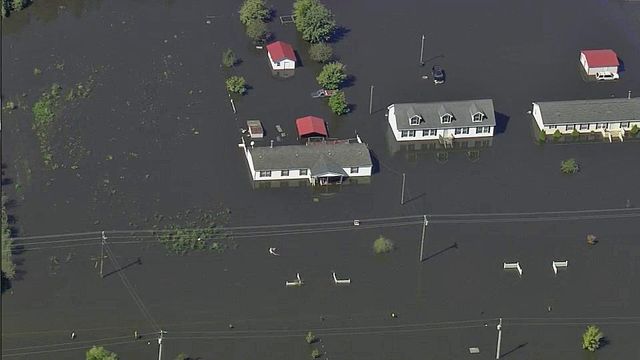Looming hurricane season a reminder that NC must do more to mitigate flood risk
The early season warning delivered by Subtropical Storm Alberto - that North Carolina is especially susceptible to storm surge and flooding - coincides with a series of state studies examining how to prevent or alleviate future catastrophic events.
Posted — UpdatedThe state agrees, and North Carolina Emergency Management has been working on solutions that go beyond raising or moving buildings and building higher levees. The studies also look for ways to slow down the flooding well upstream.
One idea is to ease the pressure on rivers, slowing flooding before it spreads.
North Carolina Emergency Management Assistant Director John Dorman outlined a plan to build wet reservoirs – essentially new lakes – along the Tar and at the top of Fishing Creek, and/or to establish dry reservoirs on Stony and Swift creeks, simple, low-lying areas that can be used as ballfields and parks, but when catastrophic rain falls, then can collect water like reserve bathtubs.
"You basically allow the water to raise up, but you've got the drain. The drain doesn't let all the water run out at one time, it runs out slowly," Dorman said.
Improvements could cut the cost of a future Hurricane Matthew-level event by more than half, but they'd be costly to implement. Buying and building the detention areas would cost tens of millions of dollars and take decades. And structures in the floodplain would still need to be elevated or moved.
The decisions will be made by state and local leaders, but the data gives them many options to consider.
For residents tired of the Tar River's rising water, any and every option is welcome news to keep history from repeating.
"We have struggled for so long in eastern North Carolina," said Princeville Mayor Bobbie Jones.
Related Topics
• Credits
Copyright 2024 by Capitol Broadcasting Company. All rights reserved. This material may not be published, broadcast, rewritten or redistributed.






